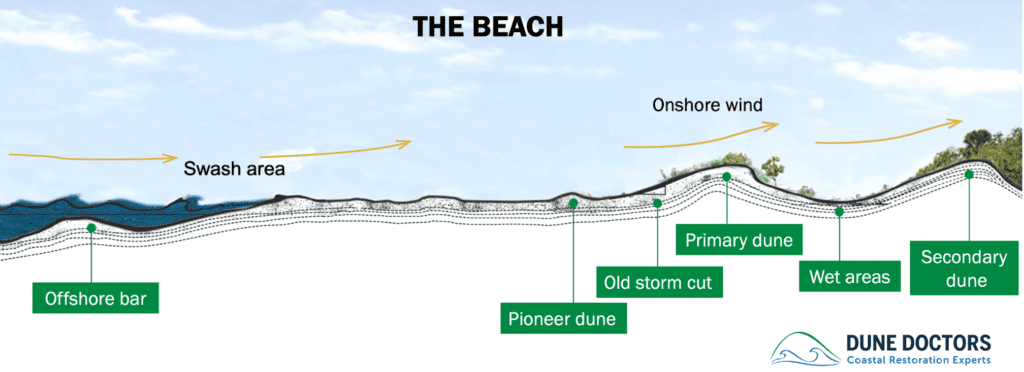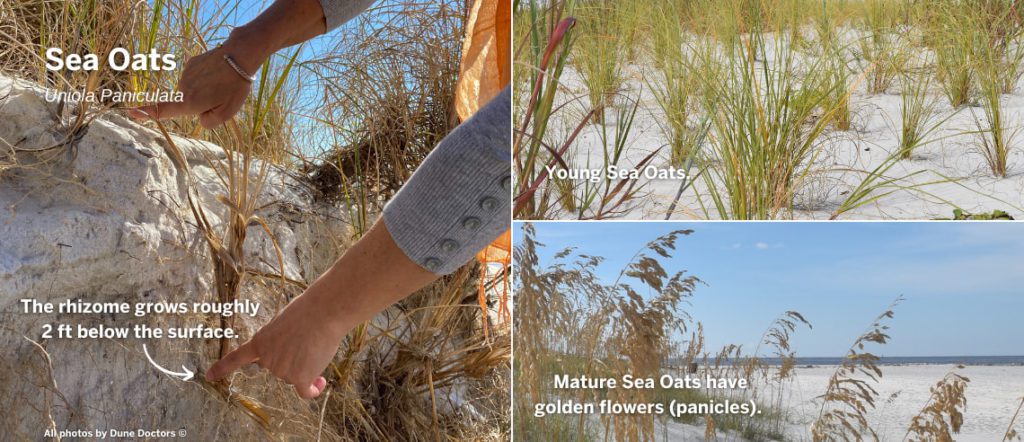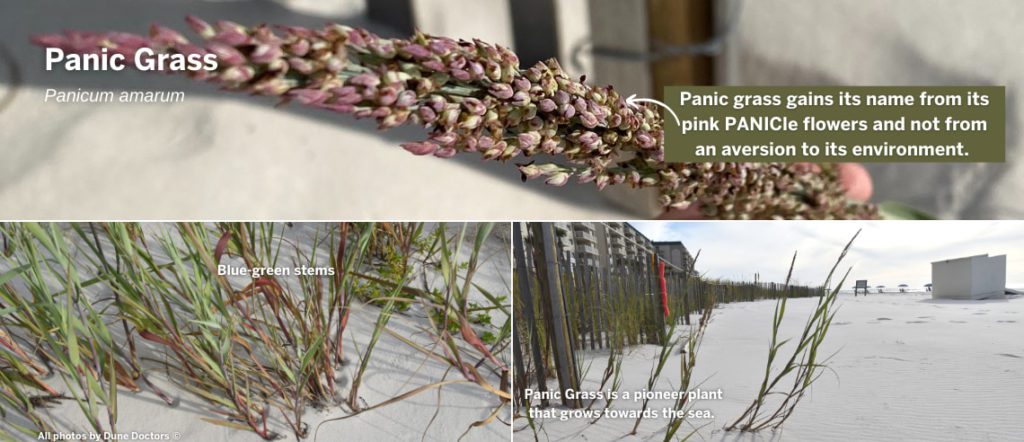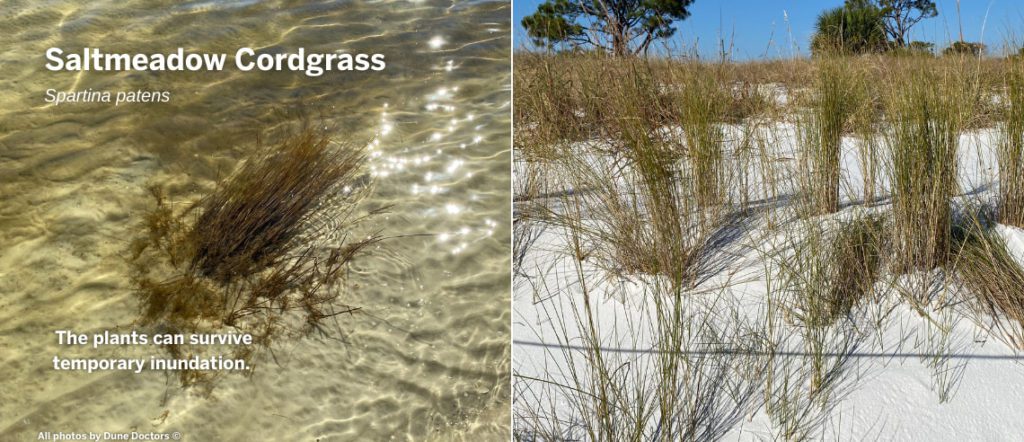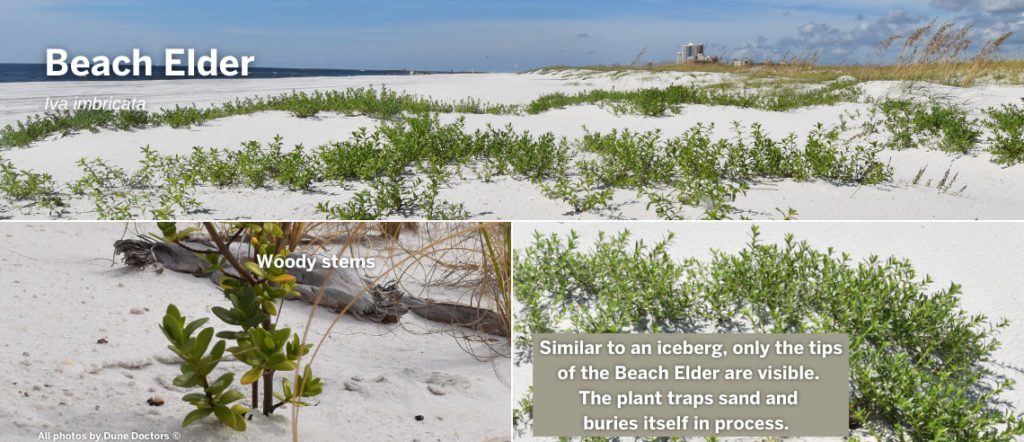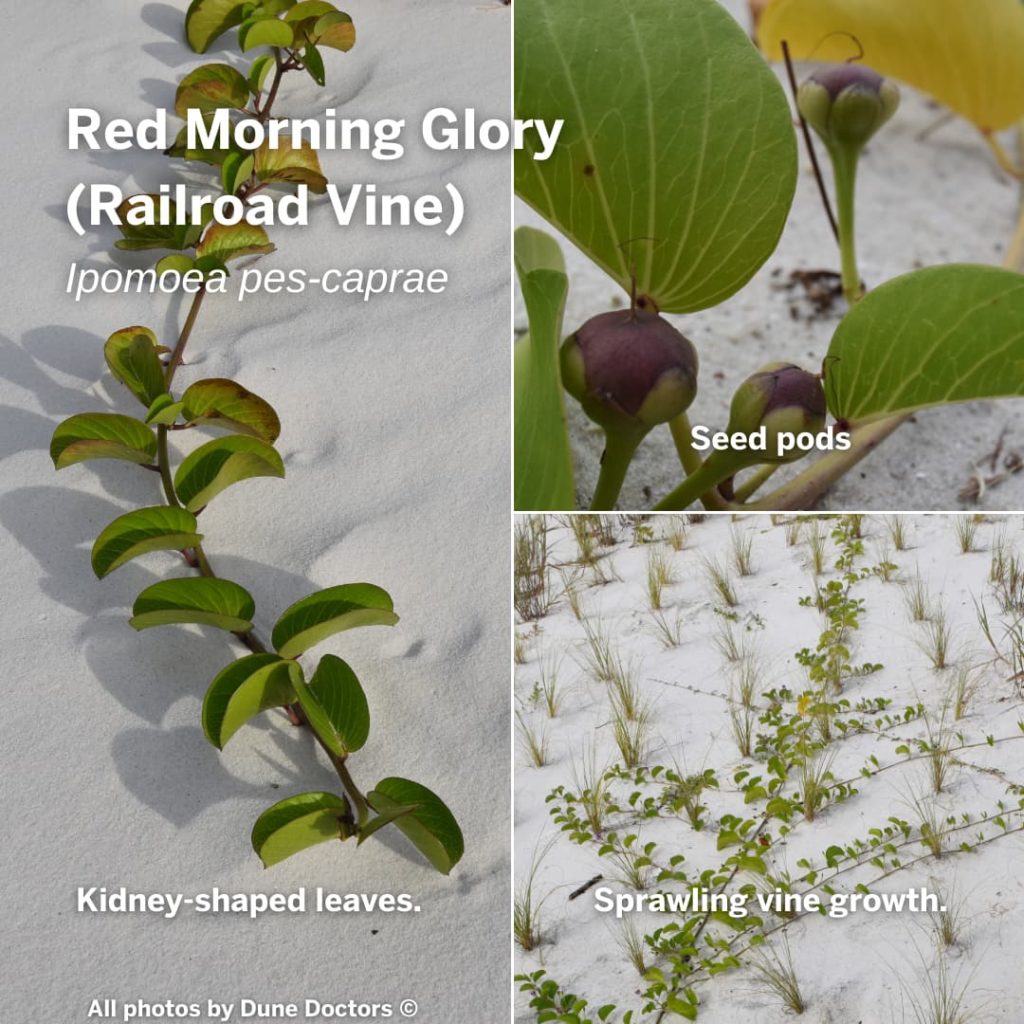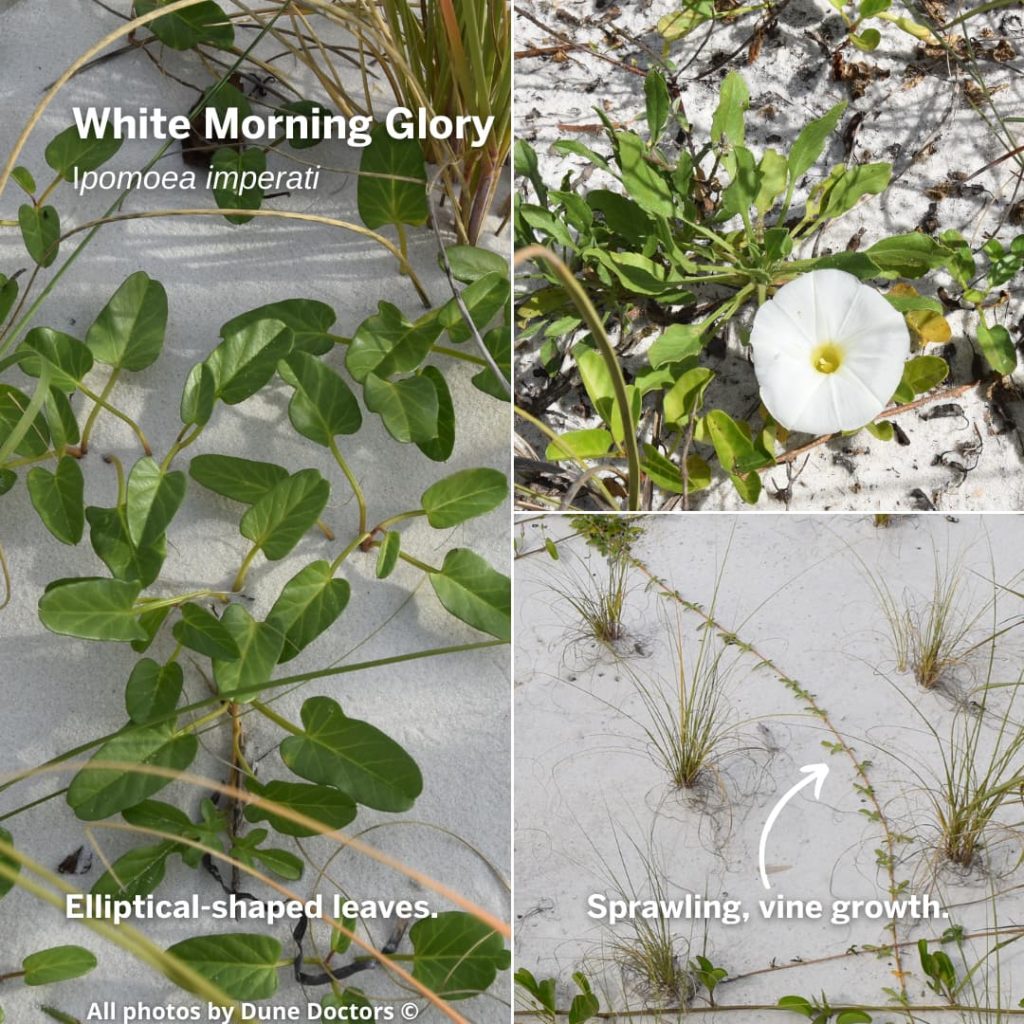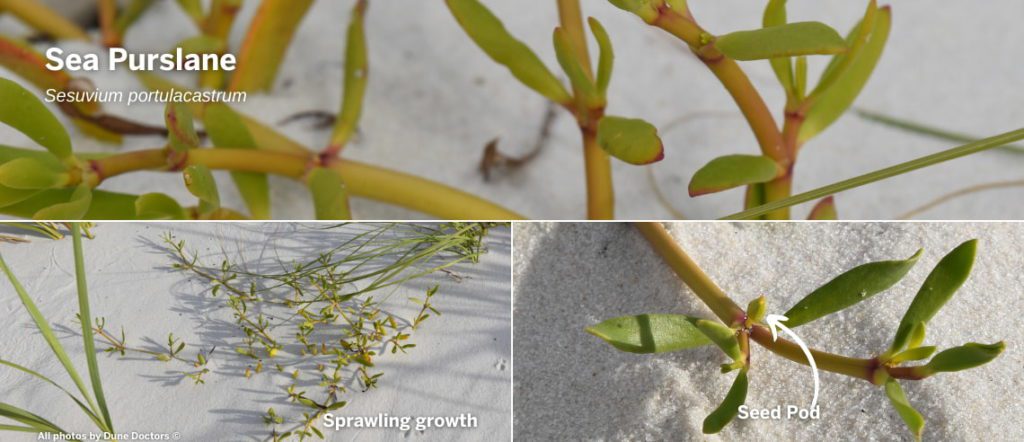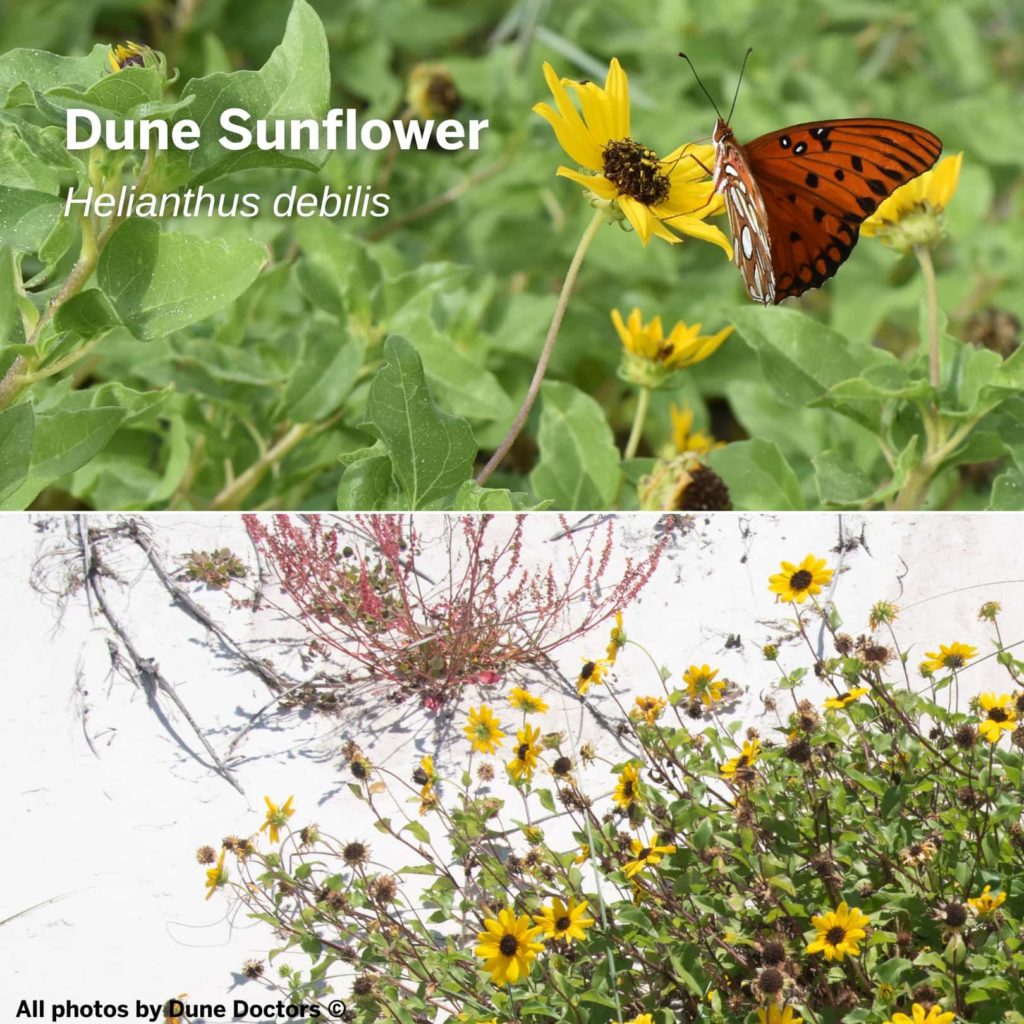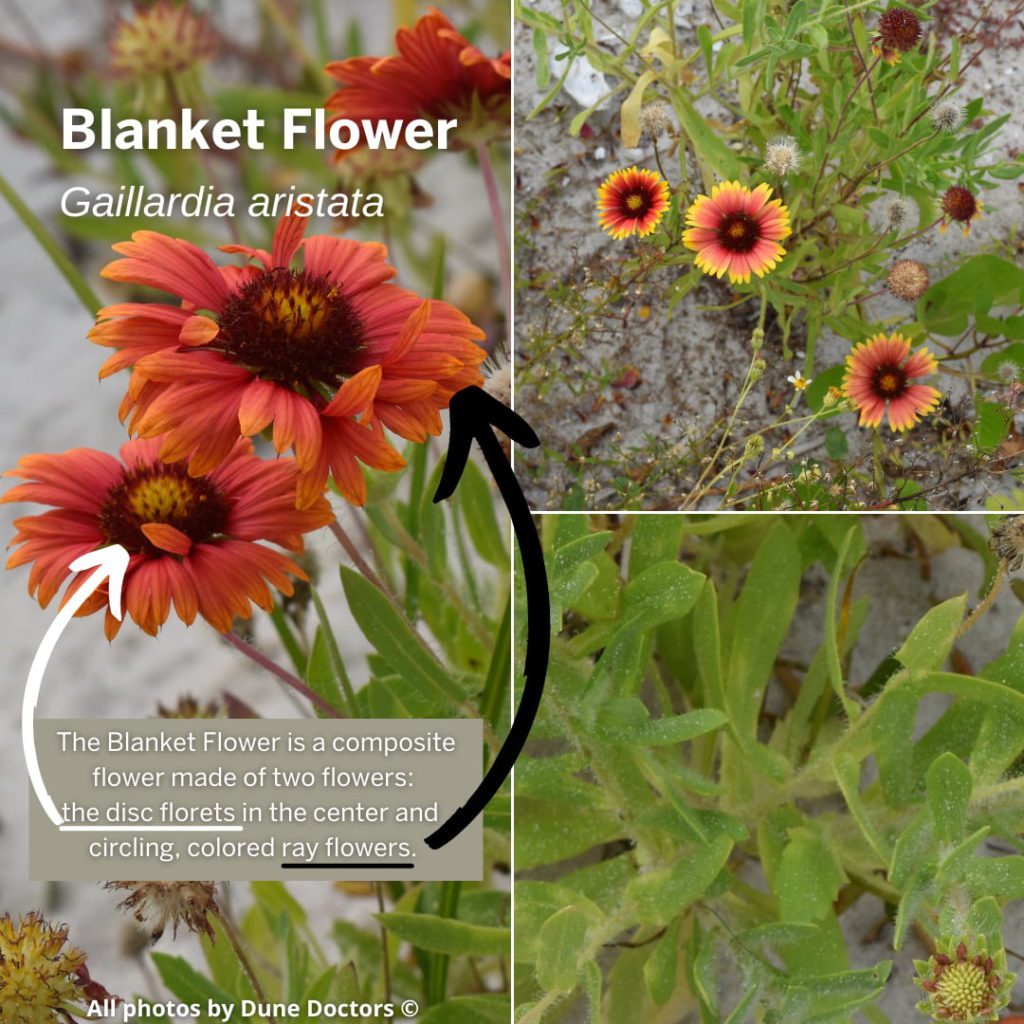What can a group of determined kids accomplish in four hours? When it comes to the second-grade class at Orange Beach Elementary School, they can restore a public beach access with roughly 2,000 native plants. On October 13th and 14th, Orange Beach Wind and Water Learning Center and the Sea, Sand, and Stars Nature and Science Center partnered with Dune Doctors and Gulf State Park Naturalists to host a Dune Restoration Event for 80 students to install native dune-building plants at the Cotton Bayou Beach Access, Orange Beach, AL. This educational partnership is part of Dune Doctors’ mission to promote coastal resiliency through hands-on dune restoration and classes. Dune Doctors is a coastal erosion control firm based out of Pensacola, Florida, specializing in planning, constructing, and maintaining native ecosystems and protective landscapes.
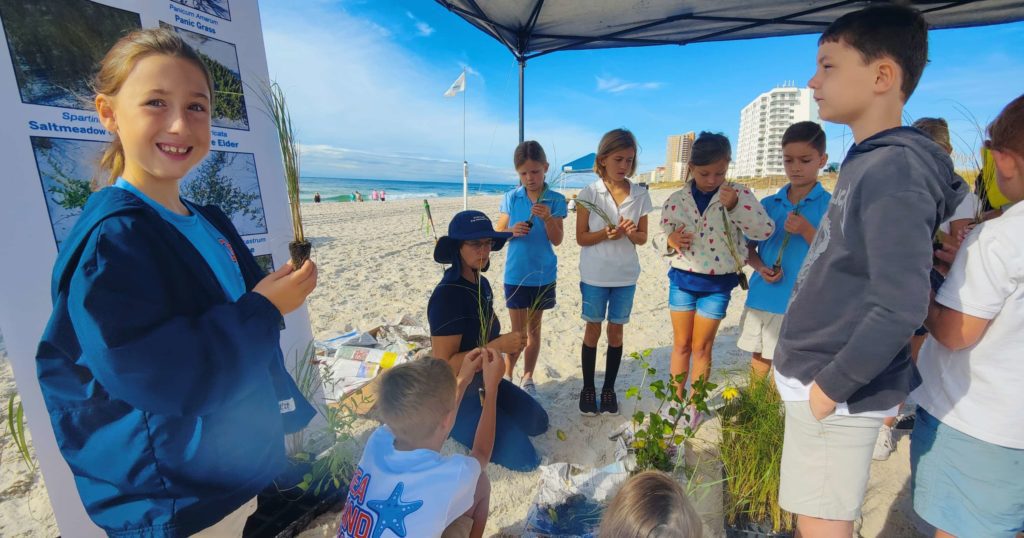
The field trip aligned with the second-grade curriculum as students were currently learning about slow and fast forms of erosion. For some students this event was their first school field trip after entering the schooling system at the beginning of the Covid-19 pandemic.
What did the Students do at the Dune Restoration Event?
Before planting, the students attended three classes on native coastal plants, dune wildlife, and dune formation. The classes were taught by Amanda Post, Educational Coordinator for Dune Doctors, Kelly Reetz the Resource Manager for the Gulf State Park, and Frederique Beroset the CEO of Dune Doctors. After the classes, the students split into groups to install the vegetation. The students worked with various native plants, including sea oats, panic grass, sea purslane, beach elder, and red morning glory.
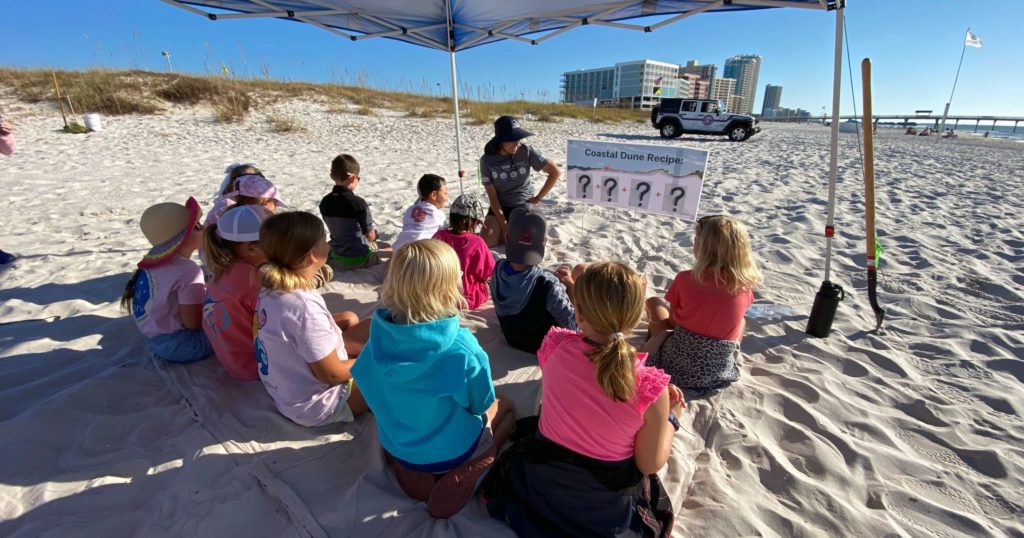
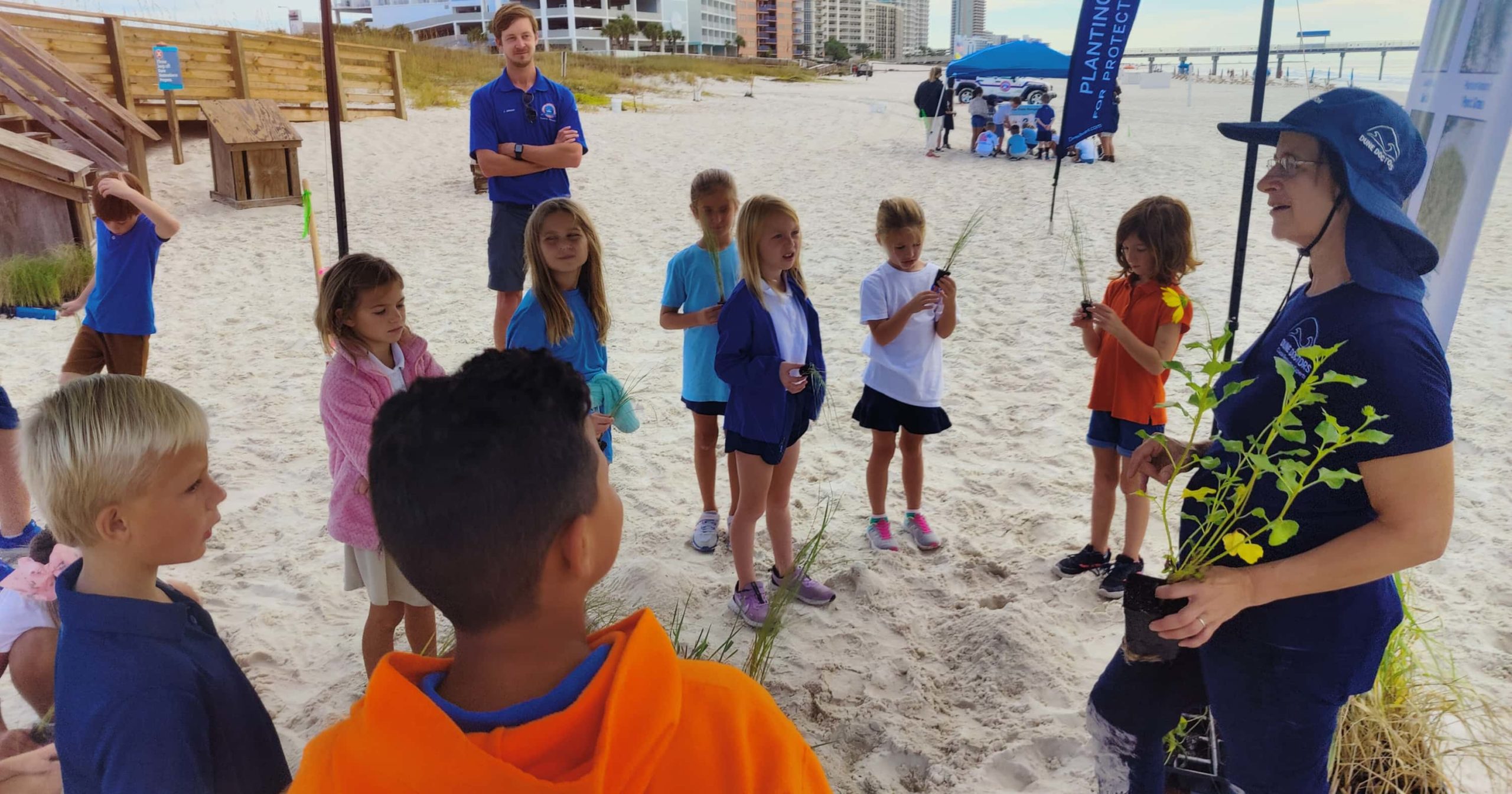

How Does this Dune Restoration Event Benefit the Community of Orange Beach, Alabama?
The overarching goal for the event was to help kids develop a sense of stewardship over their local dune environment. Jackie McGonigal, the Orange Beach Wind and Water Learning Center Coordinator, who bridged the connection between the local school and organizations shared her “goal is to increase environmental literacy.” Nikki Walker, a teacher from the Sea, Sand, and Stars Science and Nature Center, said the restoration encouraged students to develop a personal connection to the dune environment and return to Cotton Bayou Beach with their loved ones.
“Our goal is to increase environmental literacy.”
Jackie McGonigal, Orange Beach Wind and Water Learning Center Coordinator
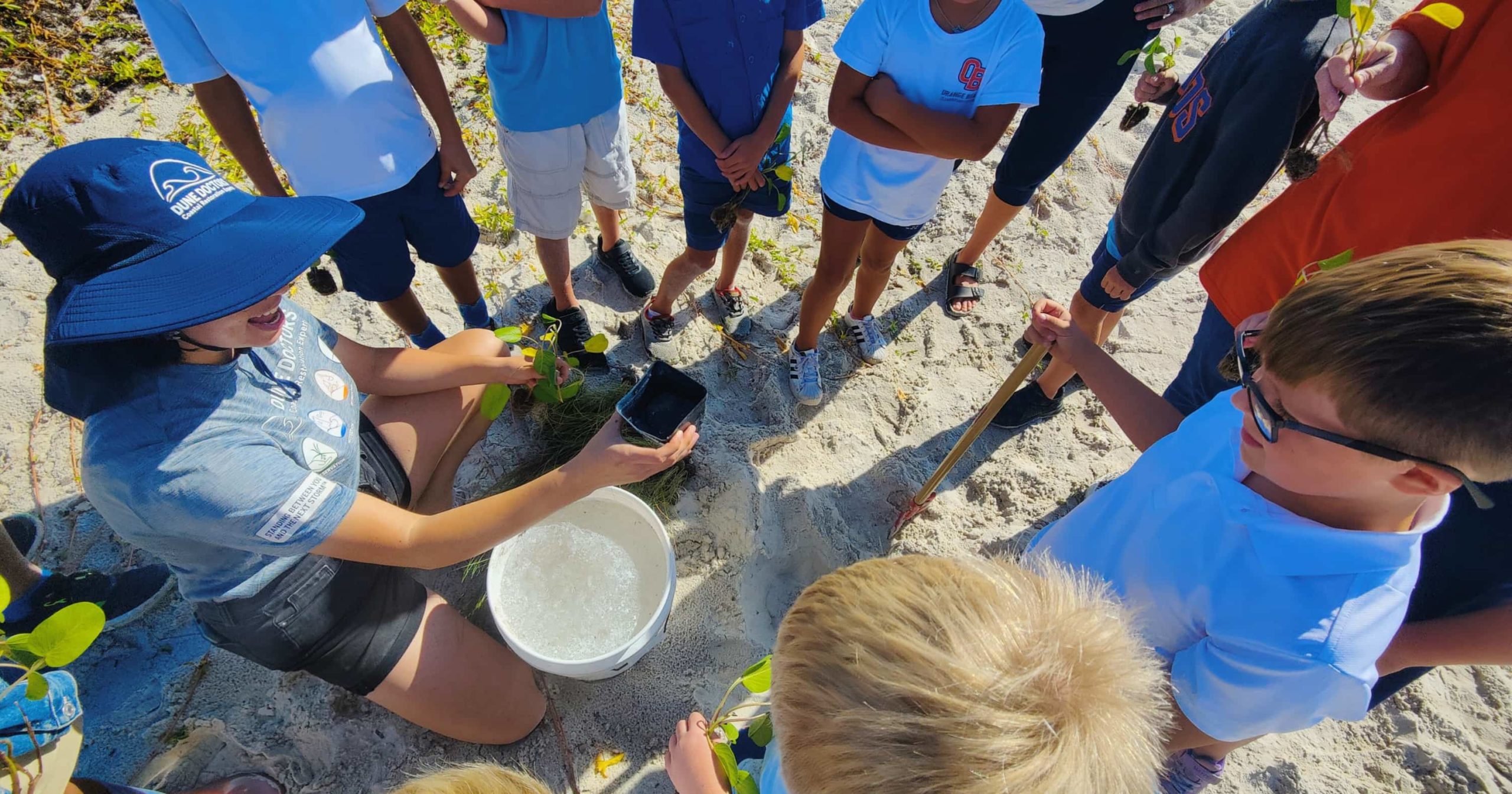
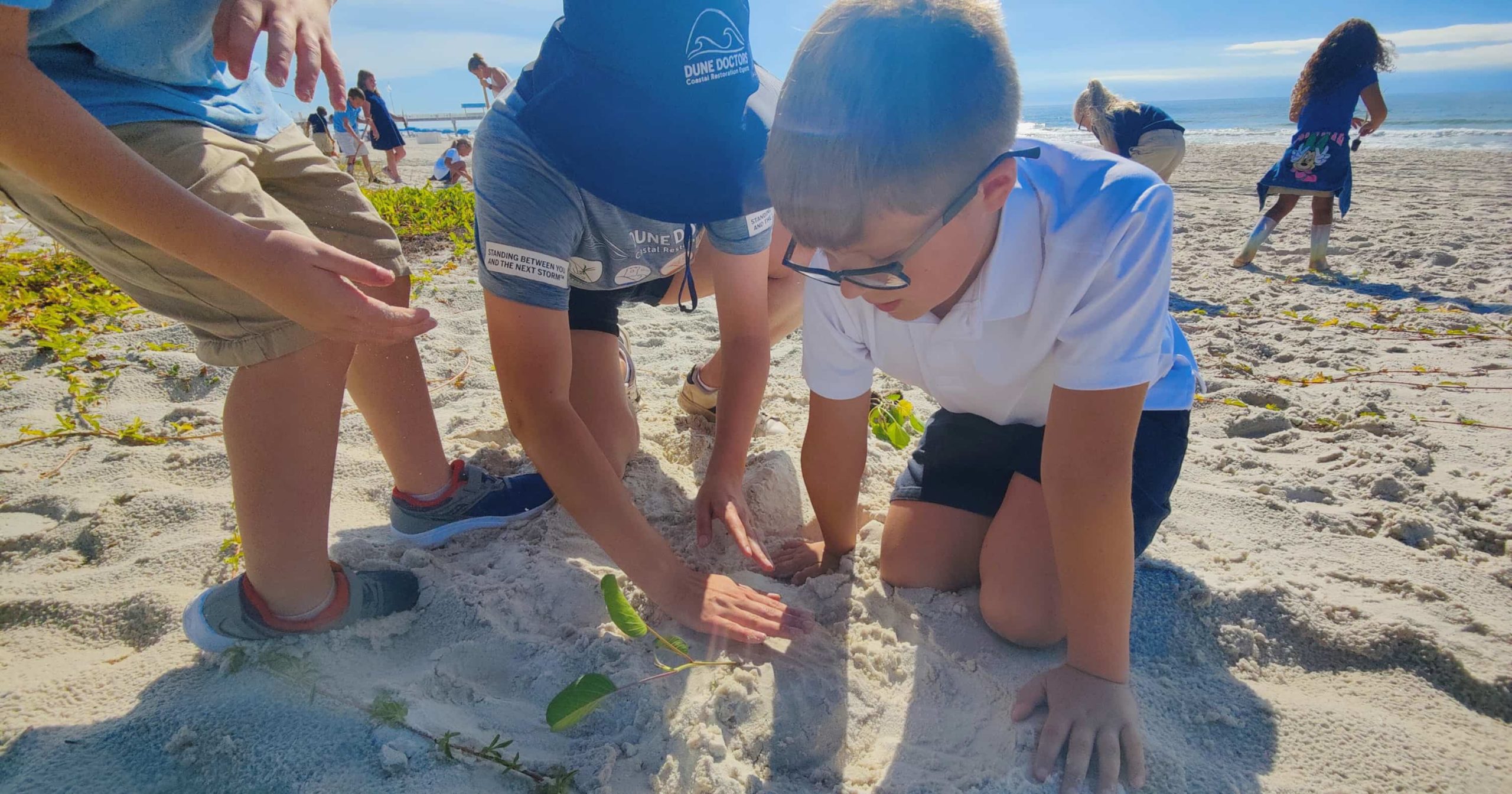
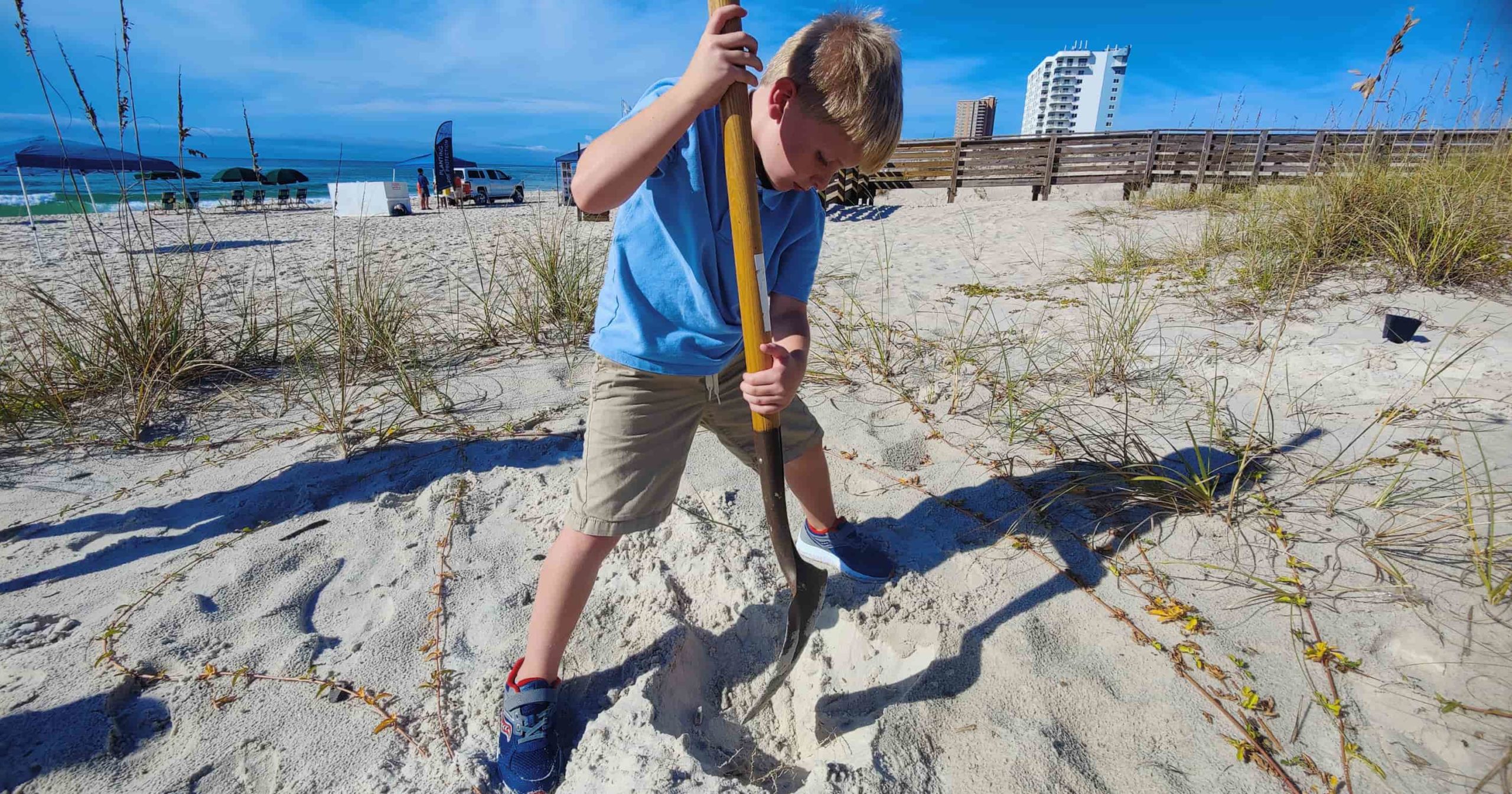
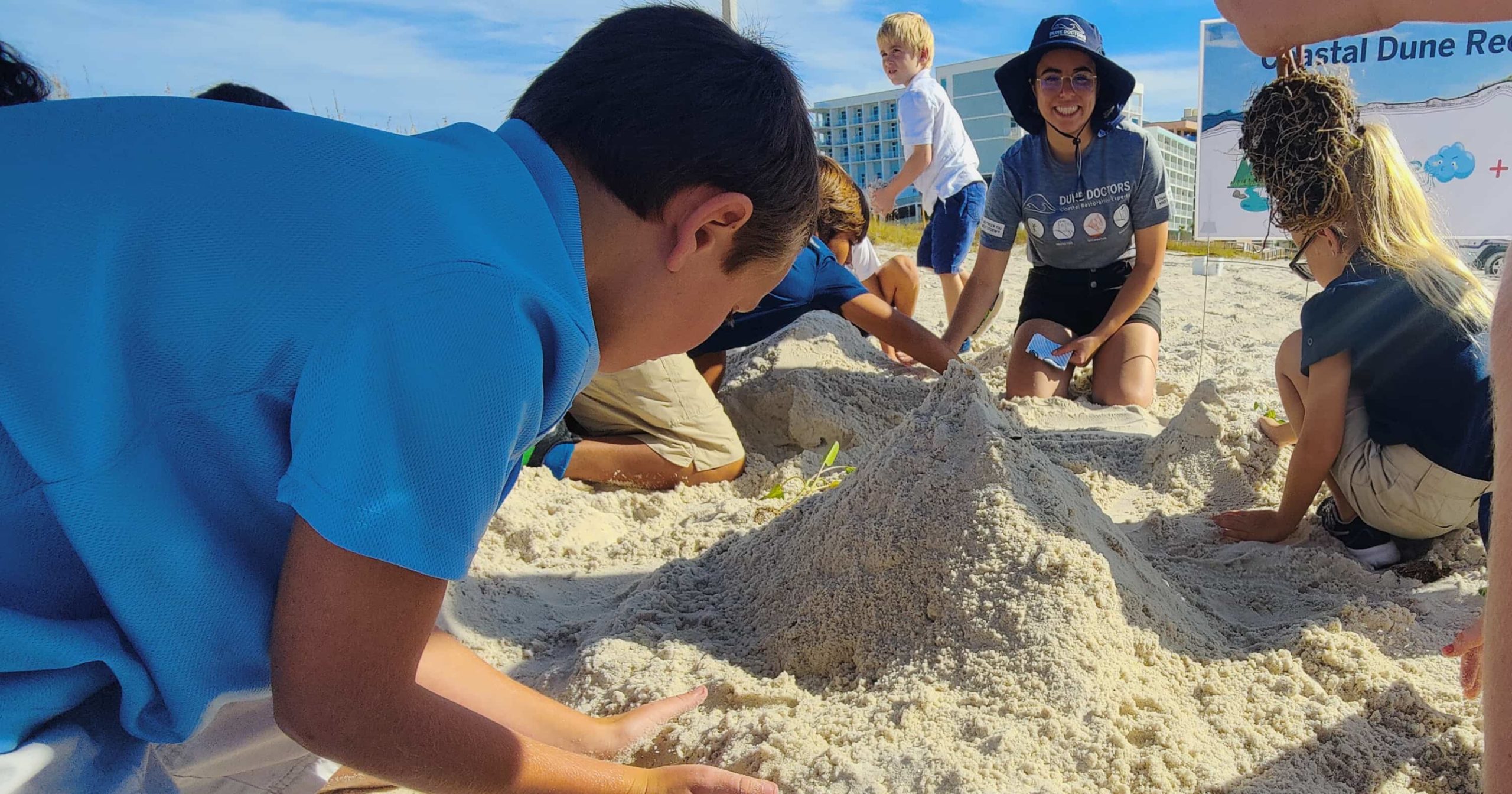
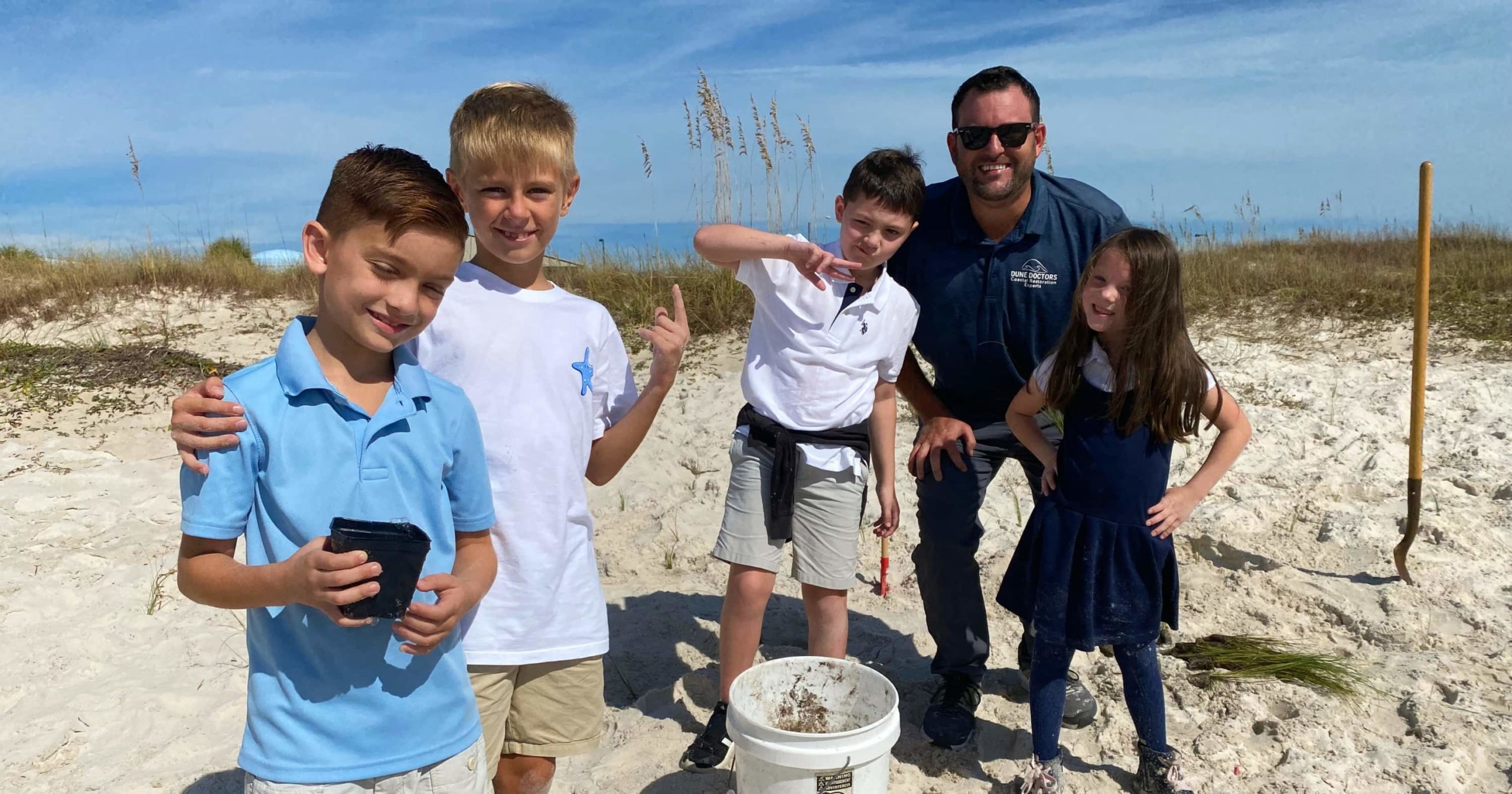
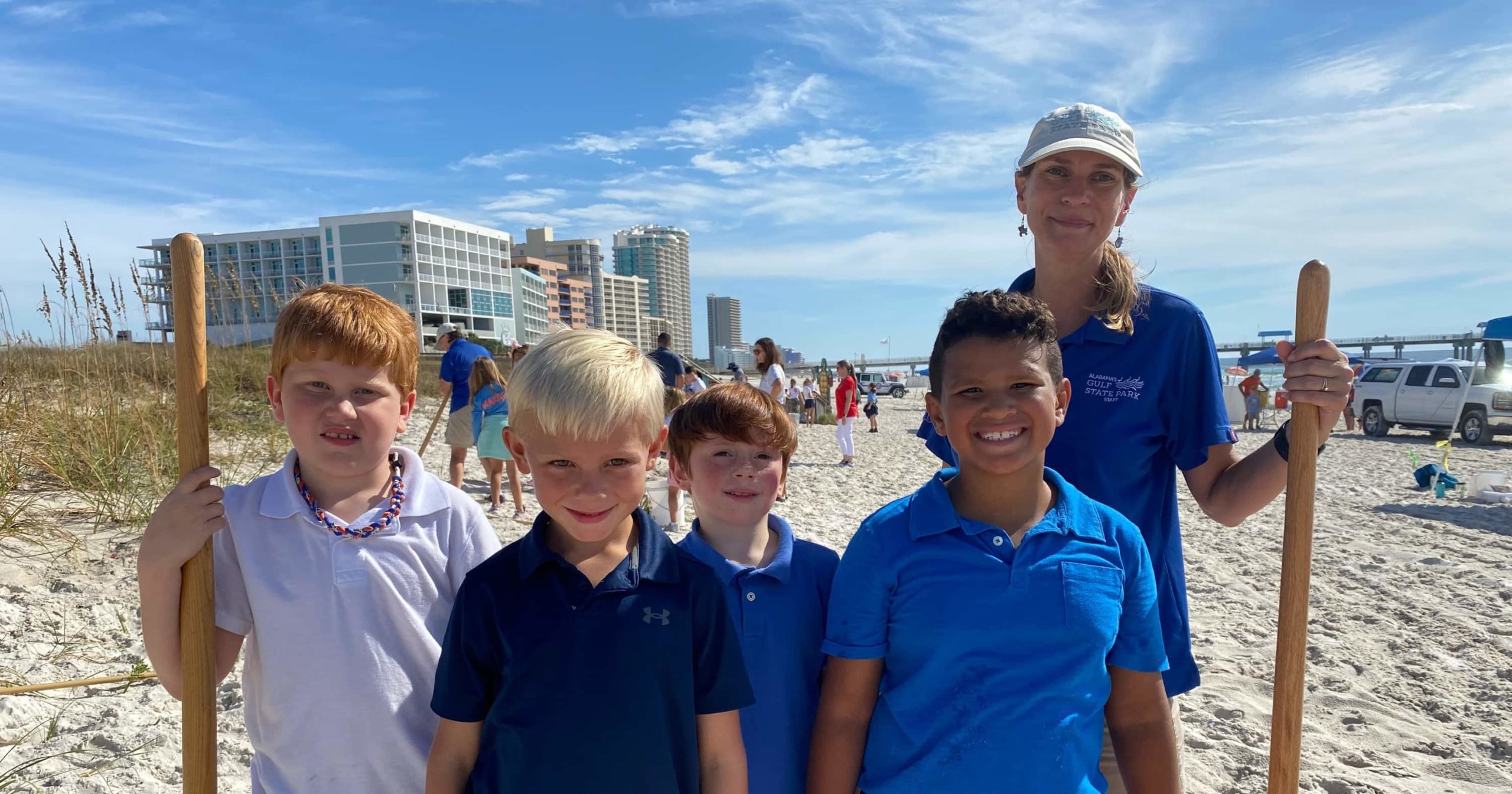
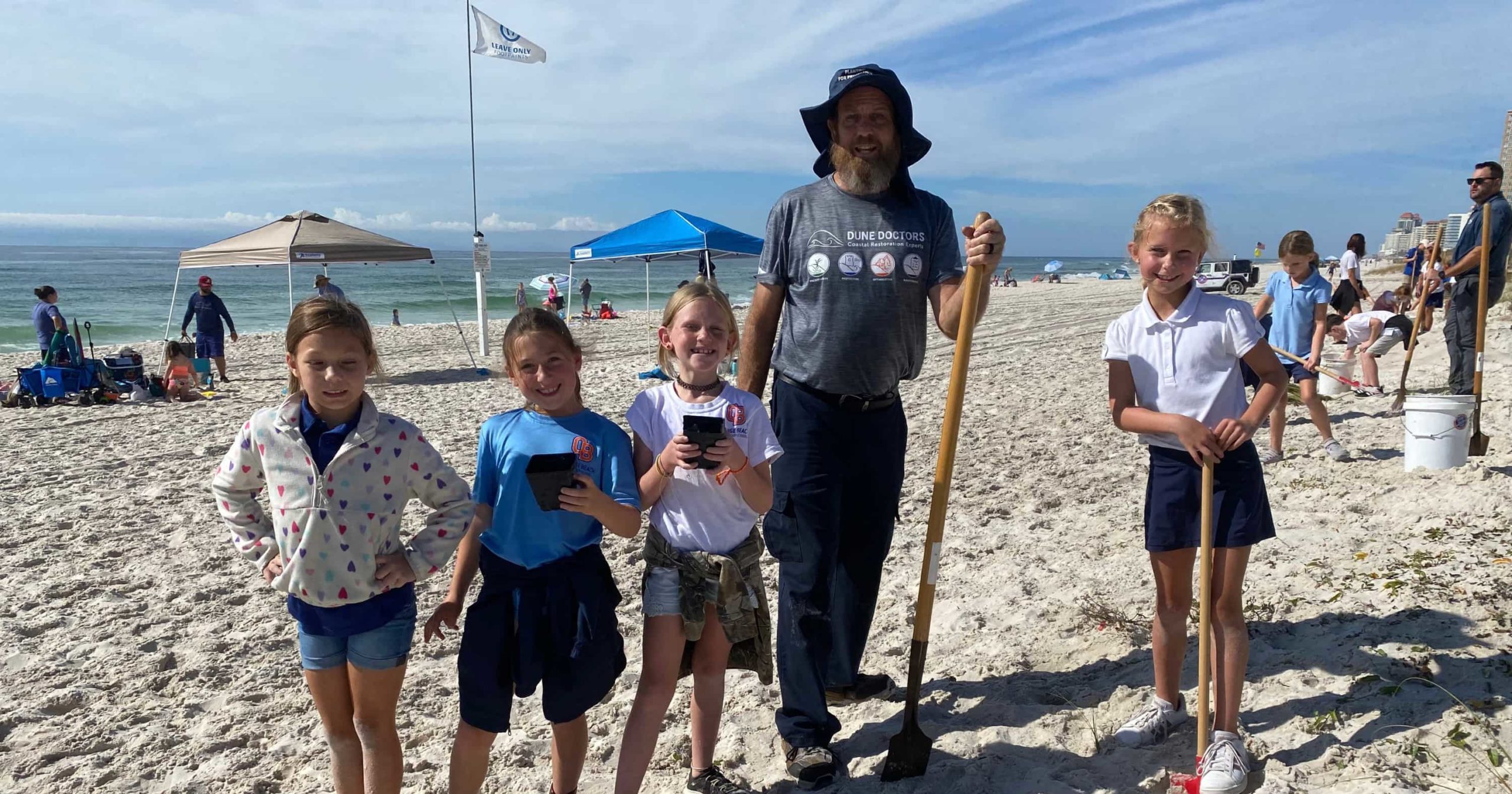
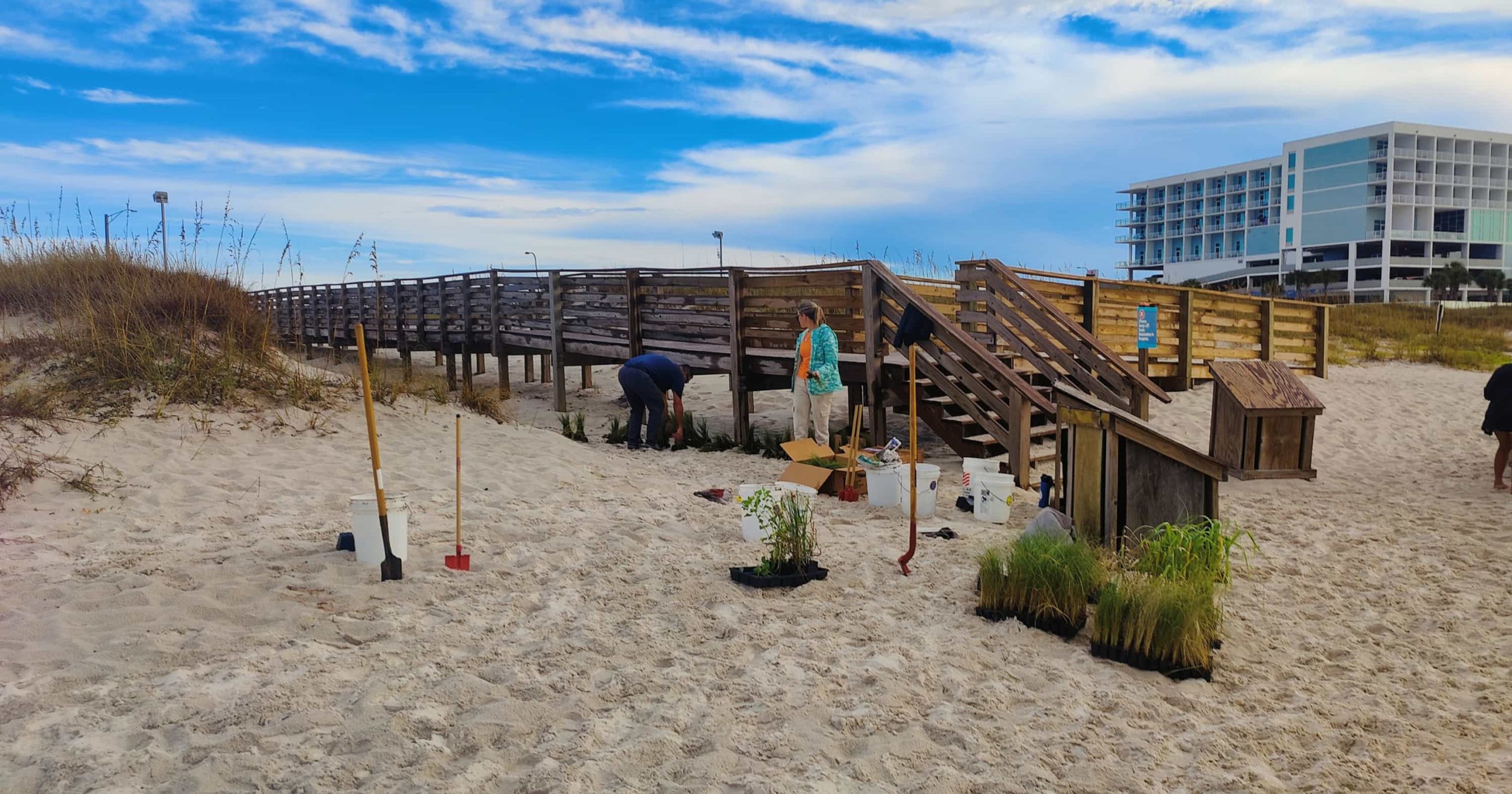
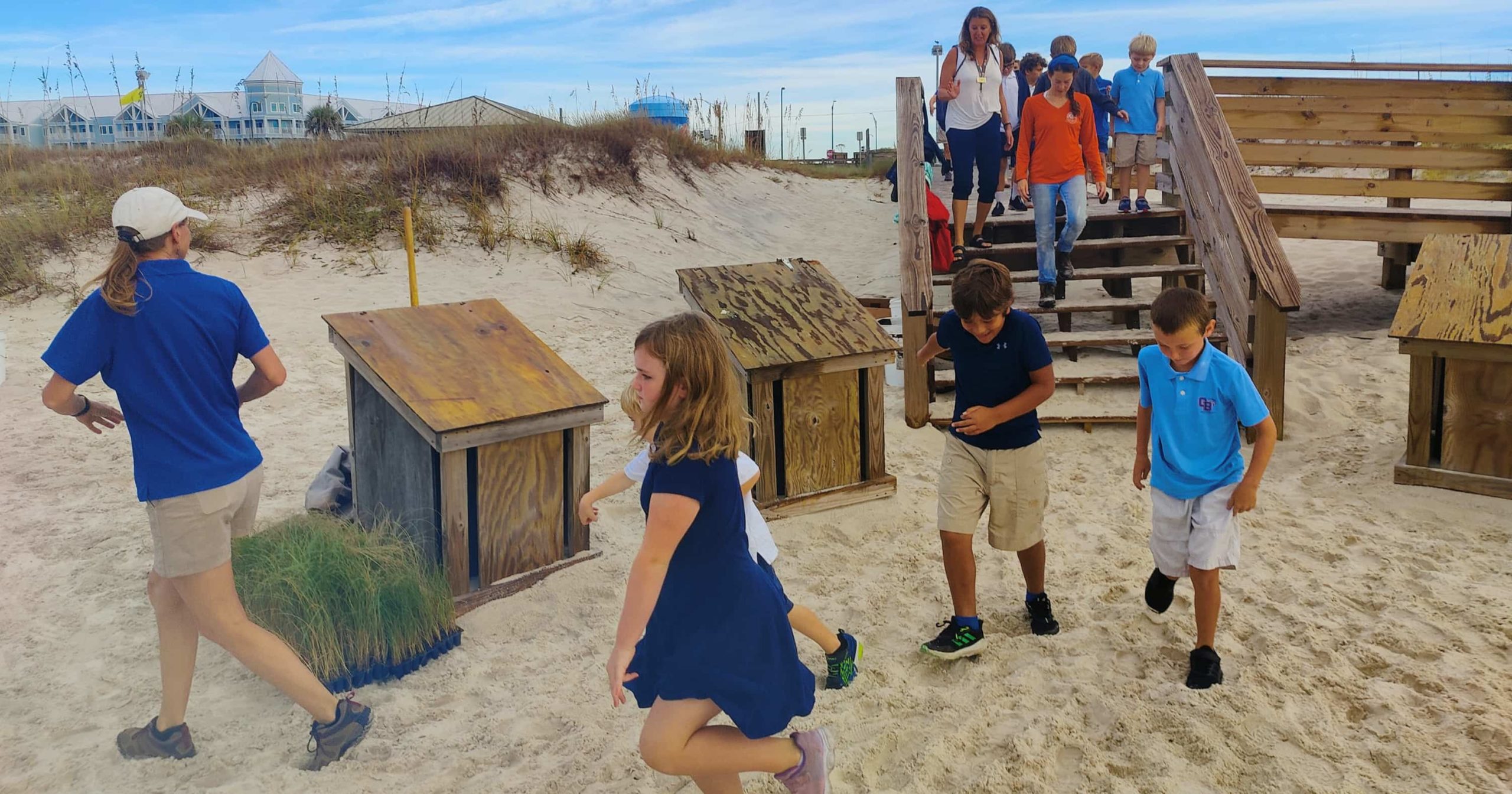
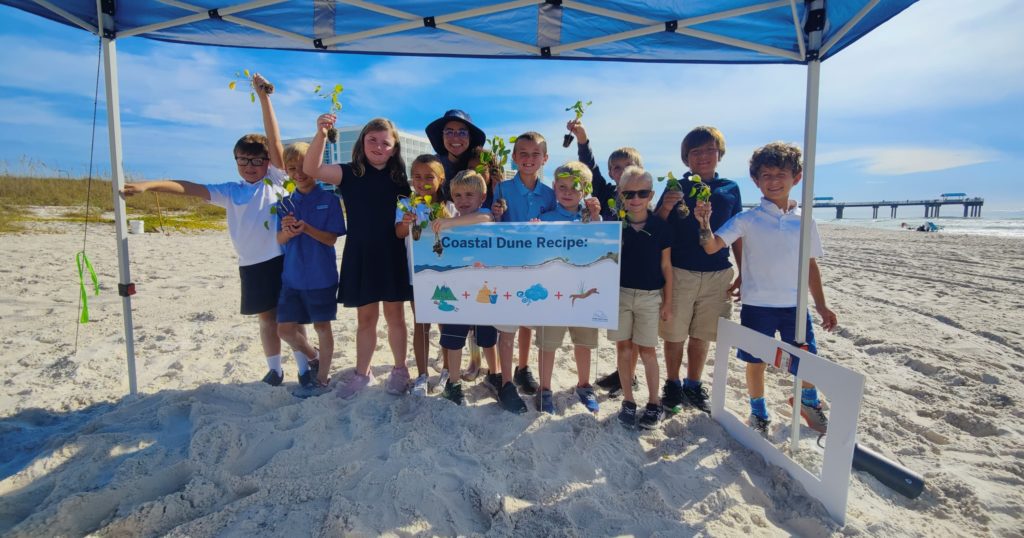
Why Engage Students to Participate in a Dune Restoration?
Coastal dunes are nature’s first line of defense against destructive wave action. However, even though these vegetated mounds can help absorb the impacts of storm surge, dune ecosystems are threatened by foot traffic erosion and imprudent development. Dune Doctors’ mission is to promote the stewardship of coastal ecosystems by encouraging people to regard the natural coastal environment as a valuable asset that must be invested-in, respected, and cared for. With over 22 years of experience in building coastal resiliency for commercial, private, and government properties, our restoration experts share their expertise with students to help educate the next generation of Coastal Stewards. Dune Doctors organizes dune restoration events through partnerships with schools, governmental organizations, NGO’s, and other communities.
“At Dune Doctors, we are passionate about building and maintaining healthy dunes to help protect coastal communities from storm surge. To promote the importance of this critical ecosystem, we also lead hands-on dune restoration events designed to educate and empower Coastal Stewards of all ages to take ownership over the preservation of their local beach and dune environment.”
Frederique Beroset MBA & MS Biology, CEO of Dune Doctors
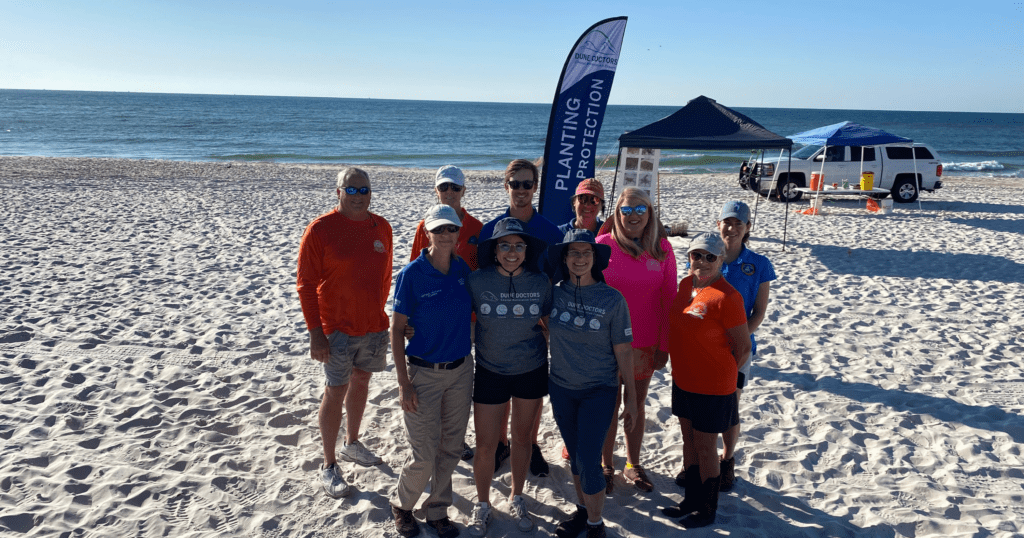
Want to Build Sustainable Coastal Resiliency for Your Property?
If you live along the coastline and want to join other owners in strengthening your natural dune ecosystem, contact us at 866-386-3737 or fill out this form to request a free Dune Health Assessment. Our Coastal Restoration Experts will visit your property to evaluate the health levels of your dune environment and determine where potential failure points and at-risk areas may exist. After diagnosing the specific needs of your property, Dune Doctors will provide you with a Dune Master Plan™, a personalized roadmap designed for you to achieve coastal dune resiliency and property fortification.
